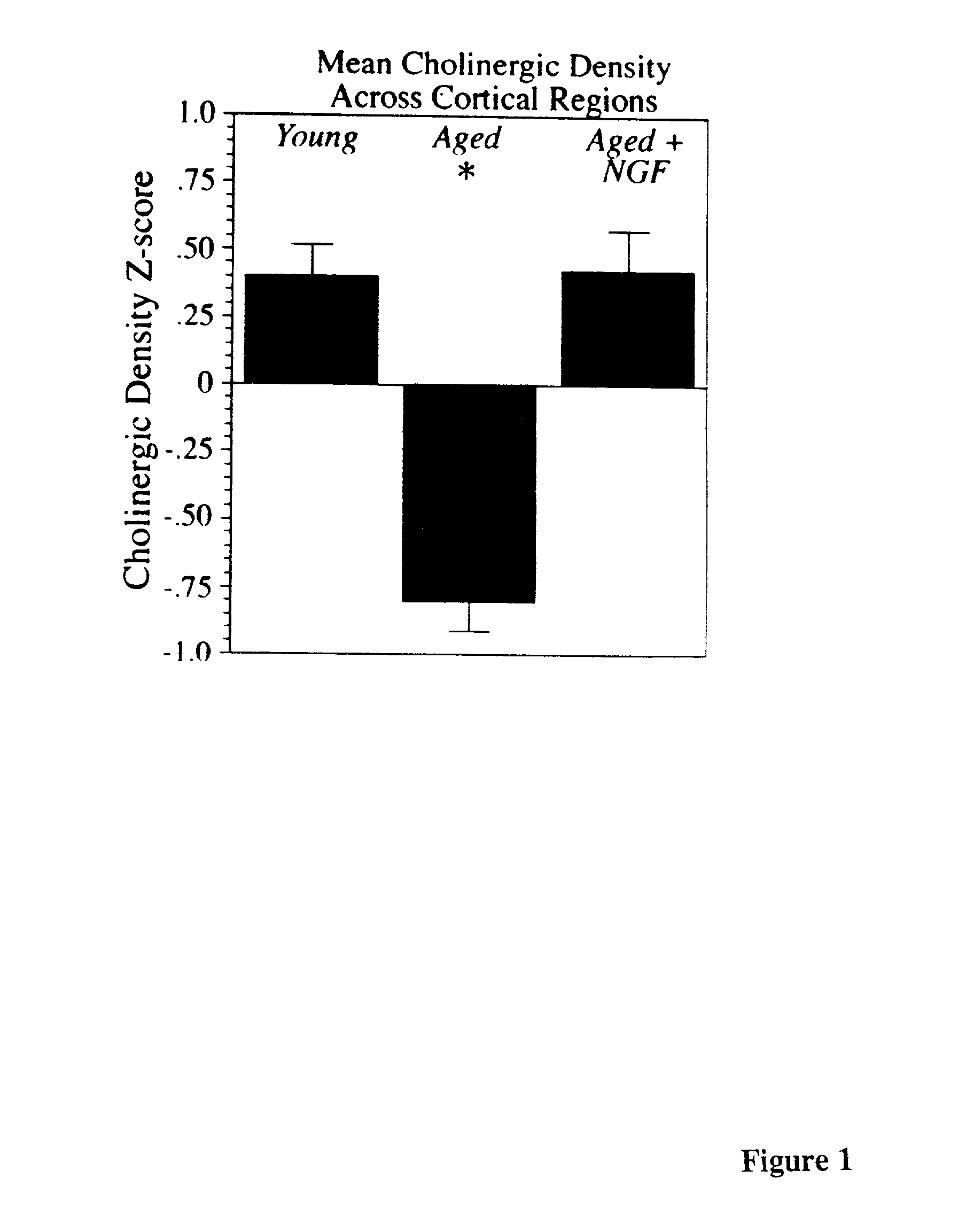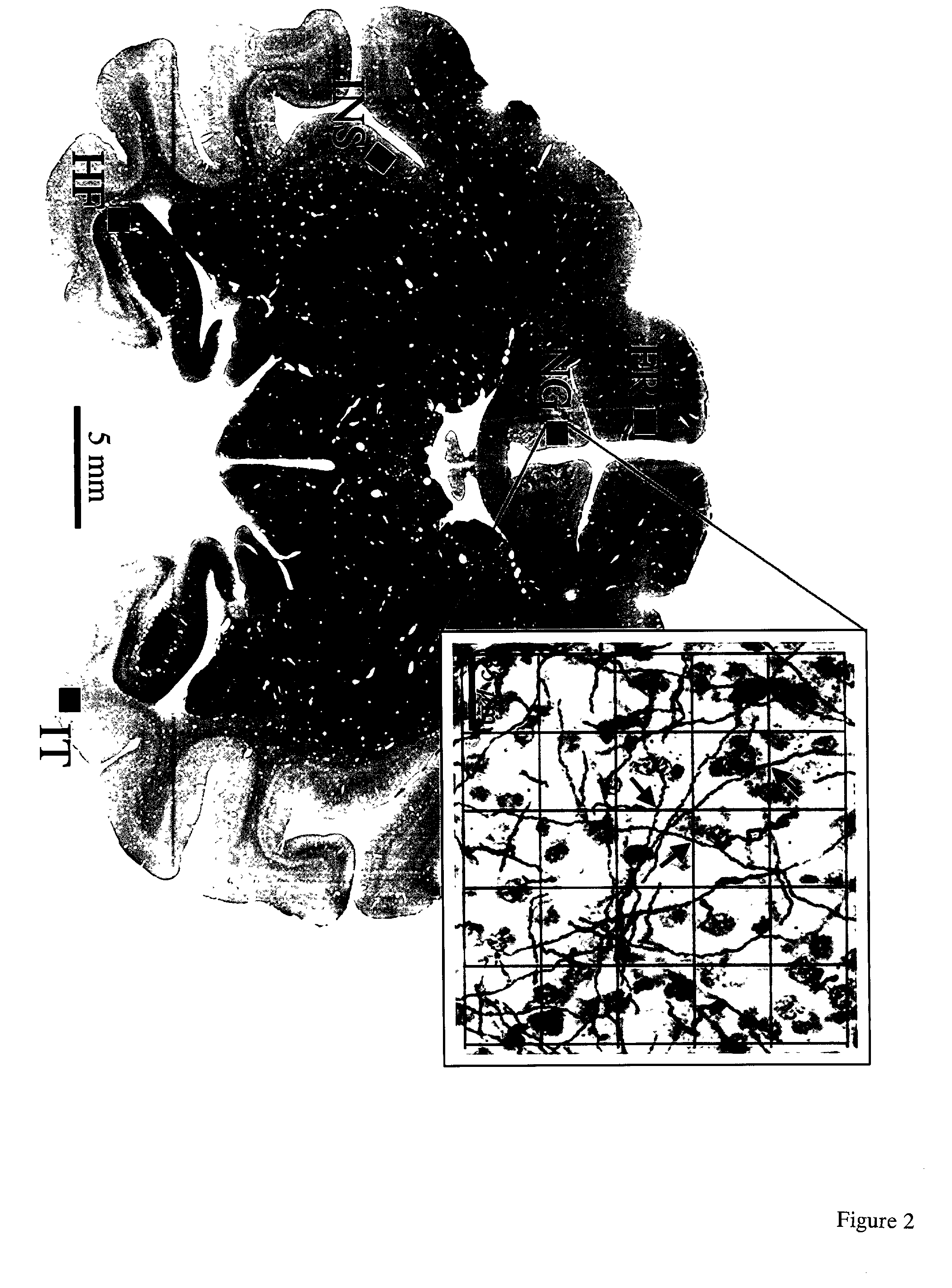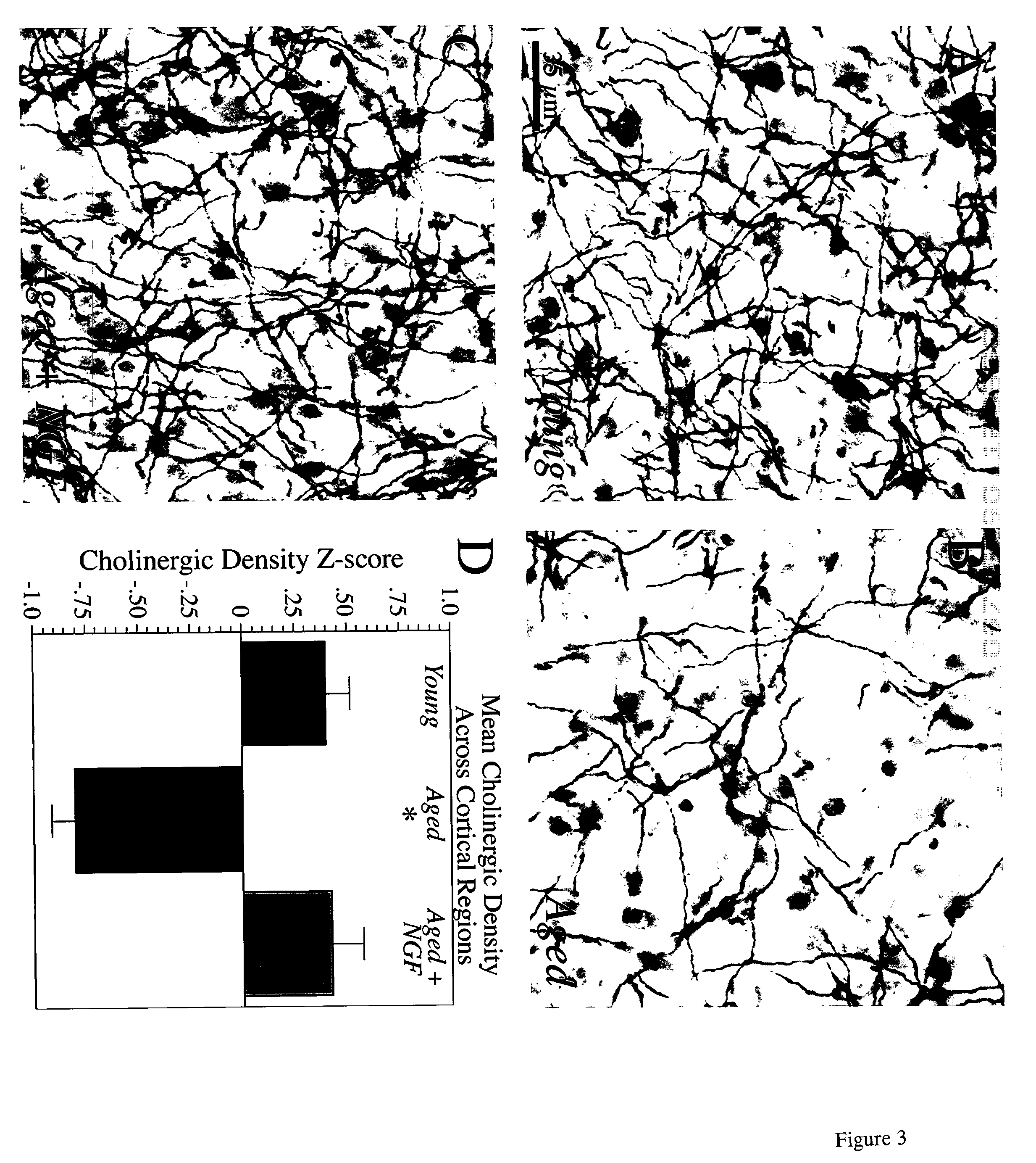Methods for modulation of the effects of aging on the primate brain
- Summary
- Abstract
- Description
- Claims
- Application Information
AI Technical Summary
Benefits of technology
Problems solved by technology
Method used
Image
Examples
example ii
PREPARATION OF h-NGF SECRETING FIBROBLASTS
[0069] For NGF delivery to aged subjects, monkeys received intraparenchymal grafts of autologous fibroblasts genetically modified to produce and secrete human NGF, as previously described. Briefly, autologous fibroblasts obtained from skin biopsies were genetically modified in vitro to produce and secrete the active portion of human NGF. Transduction procedures were carried out using replication-incompetent retroviral vectors derived from Moloney murine leukemia virus (MLV). Transduced cells were selected by growth in the neomycin analog G418. Production of biologically active NGF was verified by induction of neurite outgrowth from PC12 cells as described; production of NGF mRNA was determined by Northern blot; and amounts of NGF produced from cells were assayed by NGF ELISA specific for human NGF and sensitive to 5 pg / ml. Optimal NGF-producing bulk clones were amplified to numbers sufficient for in vivo grafting by serial passaging. Cells w...
example iii
INTRAPARENCHYMAL DELIVERY OF FIBROBLASTS
GENETICALLY MODIFIED TO PRODUCE h-NGF
[0070] Monkeys underwent pre-operative MRI scans (see, Tuszynski, et al., Gene Therapy, 3:305-314, 1996) to visualize basal forebrain target grafting regions (see, Mesulam et al., J.Comp.Neurol., 214:170-197, 1983). After generating stereotaxic grafting coordinates from MRI scans, each monkey received intraparenchymal grafts of autologous NGF-secreting fibroblasts.
[0071] Stereotactic coordinates for surgery were generated from magnetic resonance images (MR) of the brain of each subject. The rostral and caudal boundaries of Ch4 were identified on each subject's MR scan, making reference to primate histological brain sections and to standard primate brain atlases. The total rostral-caudal distance of Ch4 was measured on the MR scan, and five graft injection sites were chosen that were equally distributed over this rostral-caudal distance.
[0072] The sites for desired ventral-dorsal (VD) and medial-lateral (ML)...
example iv
QUANTIFICATION OF CHOLINERGIC INNERVATION DENSITY
[0077] An intersect analysis was used to obtain a quantitative estimate of cholinergic axon density in several different cortical regions described below, using standardized methods developed by Geula and Mesulam (Geula, C., and Mesulam, M. M. (1996), Cerebral Cortex 6, 165-77).
[0078] Briefly, very high resolution digital images of AChE-stained, 40 um-thick sections were captured from an Olympus AX-70 microscope at 360X magnification (600X for hippocampus) with high numerical aperture optics using a digital Spot camera (Diagnostics Instruments Inc., Sterling Heights, Mich.) with a computer interface. Images were displayed on a high-resolution Sony monitor, and a 6.times.6 grid (175 82 m.times.175 .mu.m for 360X) was superimposed on each quantification frame using Adobe Photoshop (see FIG. 2).
[0079] The number of AChE-stained axons intersecting all gridlines in the field were quantified and summed in each image. Two fields per animal w...
PUM
| Property | Measurement | Unit |
|---|---|---|
| Concentration | aaaaa | aaaaa |
| Density | aaaaa | aaaaa |
Abstract
Description
Claims
Application Information
 Login to View More
Login to View More - R&D
- Intellectual Property
- Life Sciences
- Materials
- Tech Scout
- Unparalleled Data Quality
- Higher Quality Content
- 60% Fewer Hallucinations
Browse by: Latest US Patents, China's latest patents, Technical Efficacy Thesaurus, Application Domain, Technology Topic, Popular Technical Reports.
© 2025 PatSnap. All rights reserved.Legal|Privacy policy|Modern Slavery Act Transparency Statement|Sitemap|About US| Contact US: help@patsnap.com



